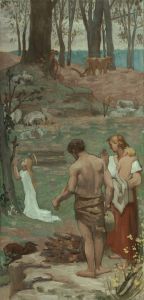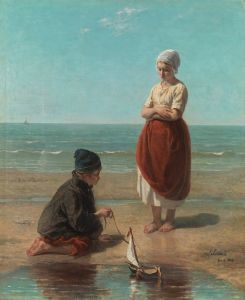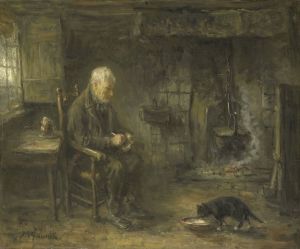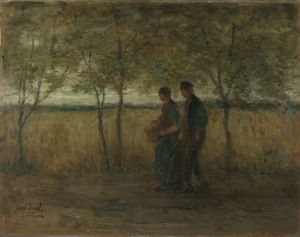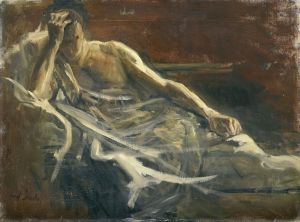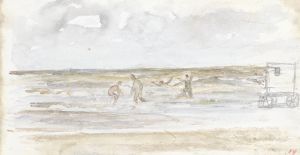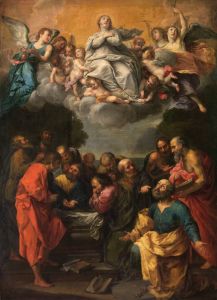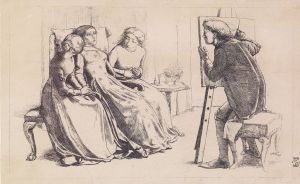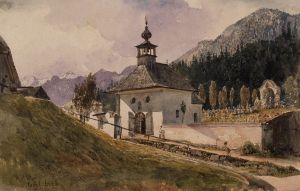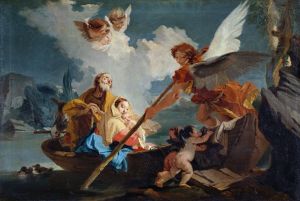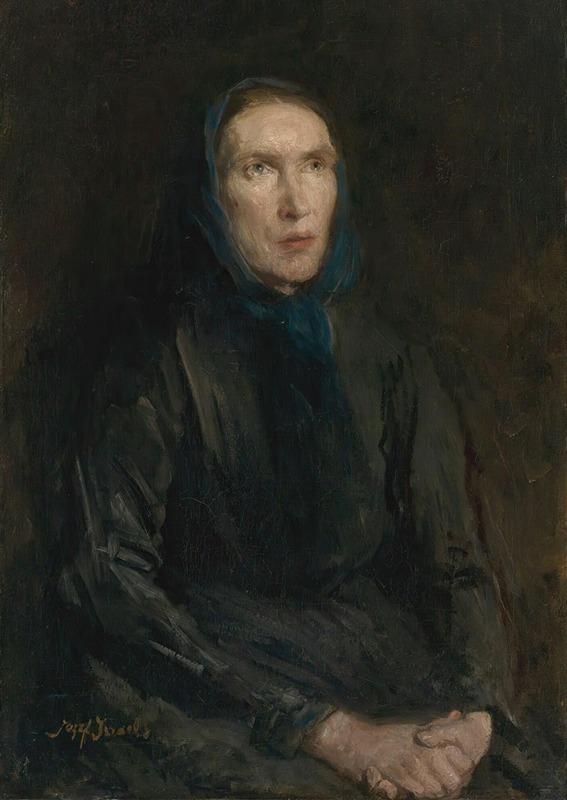
Mater Dolorosa
A hand-painted replica of Jozef Israëls’s masterpiece Mater Dolorosa, meticulously crafted by professional artists to capture the true essence of the original. Each piece is created with museum-quality canvas and rare mineral pigments, carefully painted by experienced artists with delicate brushstrokes and rich, layered colors to perfectly recreate the texture of the original artwork. Unlike machine-printed reproductions, this hand-painted version brings the painting to life, infused with the artist’s emotions and skill in every stroke. Whether for personal collection or home decoration, it instantly elevates the artistic atmosphere of any space.
Jozef Israëls, a prominent Dutch painter of the 19th century, is known for his poignant and emotive works that often depict the lives of the poor and the downtrodden. One of his notable paintings is "Mater Dolorosa," which translates to "Sorrowful Mother" in Latin. This work is a reflection of Israëls' ability to convey deep emotion and human suffering through his art.
"Mater Dolorosa" is part of a broader tradition in art that portrays the Virgin Mary in a state of mourning, typically grieving the death of her son, Jesus Christ. This theme has been a significant subject in Christian art, symbolizing Mary's sorrow and compassion. Israëls' interpretation of this theme is consistent with his style, which often emphasizes realism and emotional depth.
Jozef Israëls was born on January 27, 1824, in Groningen, Netherlands. He studied art in Amsterdam and later in Paris, where he was influenced by the works of the French Realists. Israëls' early works were historical paintings, but he gradually shifted his focus to scenes of everyday life, particularly those depicting the struggles of fishermen and peasants. This shift marked his association with the Hague School, a group of artists known for their realistic portrayals of rural and coastal life in the Netherlands.
In "Mater Dolorosa," Israëls employs a somber palette and a contemplative composition to evoke a sense of mourning and introspection. The painting likely features a solitary figure, embodying the universal theme of maternal grief. Israëls' use of light and shadow enhances the emotional impact of the work, drawing the viewer into the subject's inner world. His technique reflects the influence of both the Dutch Masters and the French Realists, combining meticulous detail with a focus on mood and atmosphere.
Israëls' work, including "Mater Dolorosa," is characterized by its empathy and humanity. He had a unique ability to capture the dignity and resilience of his subjects, even in the face of adversity. This quality made his paintings resonate with audiences of his time and continues to do so today. Israëls' art is often seen as a bridge between the Romanticism of the early 19th century and the emerging trends of Impressionism and Modernism.
Throughout his career, Jozef Israëls received numerous accolades and was highly regarded by his contemporaries. He was a member of several art academies and received awards at international exhibitions. His influence extended beyond the Netherlands, impacting artists across Europe and contributing to the broader movement of realism in art.
"Mater Dolorosa" exemplifies Jozef Israëls' mastery in portraying human emotion and his commitment to depicting the realities of life with compassion and sensitivity. His work remains an important part of art history, reflecting the social and cultural contexts of his time while continuing to speak to universal human experiences.






